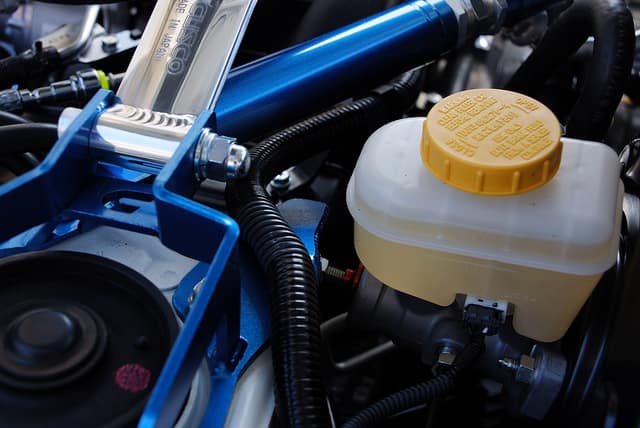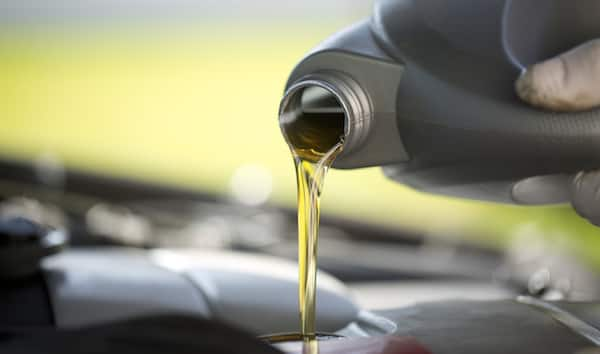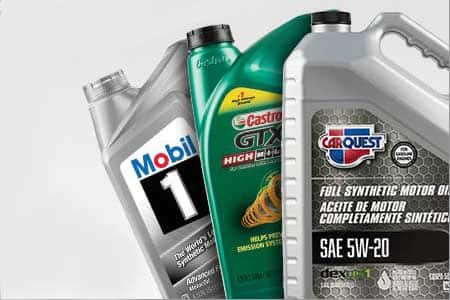Most DIYers know that ignoring fluid levels and fluid-change intervals virtually guarantees that a mechanical breakdown and shortened vehicle life are in your car’s not-too-distant future. Engine oil and coolant are probably the two fluids most vehicle owners think of, hear about, and check most frequently. However, there are several other fluids just as vital to a vehicle’s operation and longevity that many drivers inadvertently overlook. Here, we take you through those lesser-known fluids and how to check them.
Transfer Case Fluid
Vehicles with four-wheel or all-wheel drive have a transfer case on the back of the transmission. Its job is to direct power to the vehicle axles. Because it’s filled with rotating gears that are doing some heavy lifting and need constant lubrication, it needs to contain the right amount, type, and quality of transfer case fluid. Just like your vehicle’s other vital fluids, transfer case fluid degrades over time and needs to be changed. As a general rule of thumb, transfer case fluid should be changed every 30,000 miles, but it really depends on your manufacturer’s recommended guidelines and driving conditions.
Using a ’04 F150 with a 5.4 liter Triton V-8 and four-wheel drive as an example, Ford recommends changing the transfer case fluid at 150,000 miles. Shorter change intervals are recommended if the vehicle is driven through water, such as during stream crossings or when launching or retrieving a boat. That’s because there’s a chance water could seep into the transfer case and degrade the fluid’s lubricating properties sooner.
How to check transfer case fluid
Consult your manual to locate the transfer case on your vehicle. Unscrew the filler plug or cap. Use your finger or a dipstick to check the fluid level. If the fluid is low or if it's dirty brown in color, you need to change it out.
Differential Fluid
Because wheels on the same axle don’t always turn at the same speed, every axle needs a differential. On front wheel-drive vehicles, the differential may be housed within the transmission and utilize the transmission fluid. On rear-wheel drive vehicles there’s a differential in the back, and on four-wheel drive vehicles there can be three differentials--one in the front, center and rear.
And, just like the transfer case fluid, differential fluids have to keep all those turning gears and parts lubricated and moving freely. Fortunately it too is usually a high-mileage interval change, but consult and follow specific vehicle-manufacturer recommendations to be sure.
How to check differential fluid
Locate the differential in your vehicle using the owner's manual. Open the fill/service port and using your finger, check for fluid. If your finger touches fluid, then your fluid level is adequate. If the fluid doesn't reach the service port opening, then your fluid is low and needs to be serviced.
Washer Fluid
Washer fluid is one of those fluids that you don’t know is low or empty until you need it and it’s not there. It’s also an important safety item, particularly in cold-weather climates where road slush and salt can quickly coat the windshield, instantly obscuring a driver’s vision. Washer fluid doesn’t need to be changed, mainly because it’s used and replaced frequently, but in cold-weather climates it’s important to ensure that the fluid won’t freeze. Most commercially available washer fluids are pre-mixed and won’t freeze so long as you don’t add water to them.
How to check windshield washer fluid
In most vehicles, washer fluid is blue and housed in a white plastic tank. Look on the side of the tank to see if the fluid level falls between the recommended levels, or open the cap covering the tank to check the fluid level.

Source | Flickr
Brake Fluid
Brake fluid is hygroscopic, which means it attracts moisture. And moisture in brake fluid is a very destructive contaminant—it will corrode brake parts and eventually lead to system failure. The change interval, based on time and/or mileage, and specific type of brake fluid—there’s DOT 3, DOT 4, 5 and even 5.1—is important. Like most vehicle fluids which brake fluid you use depends on vehicle manufacturer specifications found online or in the owner’s manual.
How to check brake fluid
The reason the under-hood, brake-fluid reservoir on most vehicles is usually see-through is so that it can be checked at a glance, without removing the cap and introducing atmospheric moisture into the fluid. There will be “minimum” and “maximum” levels indicated. The fluid level should be in between. If the brake fluid looks dark brown and dirty it needs to be changed as well.
Power Steering Fluid
Power steering used to be an expensive add-on option for older vehicles, but today, nearly every vehicle comes equipped with it as a standard feature, making it much easier to turn the steering wheel without feeling as though you’re doing an upper-body workout. The system depends on a power steering pump and power steering fluid, and if you’ve ever turned the wheel and heard a loud groaning or moaning sound under the hood, chances are the power steering fluid was low. How often or even whether power steering fluid ever needs to be changed is vehicle-specific. Fluid levels always need to be maintained at the proper level, however, to prevent damage to the power steering pump, which could create hazardous driving conditions and require a much more expensive repair.
How to check power steering fluid
If you can’t find the power steering fluid reservoir, consult the owner’s manual for its location. It’ll either be an opaque tank where you can see the fluid level through the tank’s side, or the tank will have a removable cap and dipstick, possibly with a “hot” or “cold” marking indicating where the fluid level should be based on the engine temperature. Add the right amount, and the right type of power steering fluid.

Automatic Transmission Fluid
Automatic transmission fluid (ATF) lubricates and protects the transmission’s complex gears and also contains detergents that trap potentially destructive contaminants, holding onto them until they’re removed during a transmission fluid change. For the transmission to work properly, the right type of transmission fluid has to be used (there are many, and they are highly dependent on vehicle manufacturer specifications) and it has to be maintained at the proper level. Your car will tell you the ATF needs changing when you notice it is missing gears, its fuel economy is getting worse, or it revs up inconsistently.
How to check automatic transmission fluid
Consult your vehicle owner’s manual to locate the transmission fluid dipstick and for instructions on how to check the fluid level. Based on manufacturer, there could be differences in whether the fluid level should be checked when the vehicle is hot or cold, while it’s in park or neutral, and while it’s running or turned off.
The recommended transmission fluid change interval varies from vehicle to vehicle, and can also depend on whether synthetic or conventional ATF is being used. Consult your vehicle owner’s manual for the proper change interval—it could be as often as every 30,000 miles or as infrequently as every 100,000 miles. And while you’re at it, determine whether the maintenance schedule calls for changing the transmission fluid filter at the same time. A sure indication that the transmission fluid needs to be changed is if it’s dark or smells burned.
Fluids Can’t Be Ignored
Fluids are a vehicle’s lifeblood, and your vehicle is an expensive asset. Fluid maintenance is one of the easiest and most important ways you can protect it and help ensure miles and years of trouble-free driving.
Did we miss any important fluids? Do you have questions about any of the fluids we listed? Let us know in the comments.








